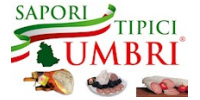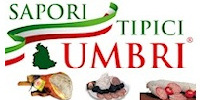 |
| Geolab: il museo - laboratorio |
The visit to the structure is articulated in five rooms, after a short introductive video featuring Piero Angela, that acts as a presentation. The public is then required to wear a yellow protection helmet before entering the museum.
 |
| la Terra e i satelliti |
The next section is a journey into the centre of the Earth, to fully understand its structure.
 |
| sala interattiva |
The third room focuses on the geological movements of the Mediterranean and Italy. A specially designed game reveals the different phases that brought about the formation of the Italian peninsula.
The fourth room deals with how the region of Umbria came into being, with a special section dedicated to fossils and analysing rocks under the microscope.
The final room deals with the places of most geological interest in Umbria.
An adventure for adults and children alike, Geolab is an environment rich in stimuli and interest, where the public takes an active role in the visit through an amusing series of games and experiments.
 |
| cartografia |
In line with its vocation to be a space open to experimentation, Geolab aims to function also as a place where the public can actually learn in a manner that is difficult to find in normal museums, where usually the materials on show are inaccessible to the public.
The Didactic Lab has been designed to suit this very purpose, with the aim of overcoming the limitations and barriers that normally exist between schools and museum structures. The system used here revolves around four different thematic sections.
 |
| fossili precambriani |
- Rock formations, with their slow evolution through sedimentations and other events, are the only indication we have to understand what happened hundreds of thousands of years ago. The rock formations that make up the hills and mountains we see today are slowly being eroded by wind and rain into small particles that will – far into the future – go to form new rocks, hills and mountains. Through a series of experiments the public will be able to differentiate between different kinds of rock according to their larger formations..
 |
| fossili |
Paleontology is the science that studies the past and enables us to travel back in time to an age populated by strange animals and plants. Fossils are the only way we have of grasping the continuous evolution of life and our planet. The lab uses fossils to enable the public to reconstruct the life forms that existed before us.
“La descrizione e la rappresentazione del paesaggio: la geografia e topografia” (describing and representing landscape: geography and topography)
For centuries man has attempted to represent the surface of the Earth as a means to understand its different geographical regions along with the physical and biological phenomena that manifest themselves in certain areas. In this section the public learns to analyse the contours of the countryside as a means to building up a map.
 |
| vulcano |
“I vulcani. Il fuoco della Terra” (volcanoes: fire from the earth)
Volcanoes and earthquakes are the only evidence we perceive of the slow and continuous moving of the earth's tectonic plates. In this section the public learns about the different kinds of volcano that exist and about the different kinds of rock they produce.
GEOTOUR
This si a three day long full immersion in the activities of Geolab, where the visit to a particular section of the museum in the morning is accompanied by a series of experiments in the Didactic Lab. During their free time in the afternoons, the puclic is encouraged to visit interesting sites nearby, such as the Medieval town of San Gemini, the archaeological site of Carsulae, the fossilised forest at Dunarobba, the Marmore waterfalls or the Sangemini water springs.
OPENING HOURS
October- May
Saturdays and Sundays 10am - 1pm and 3 - 6pm
June- September
Saturdays and Sundays 10am - 1pm and 4.30 - 7.30pm
INFORMATION
Geo-Lab Museo laboratorio di scienze della Terra
Via della Misericordia, 1
05029 - San Gemini (TR)
Tel. 0744331293
didactic secretariat (for bookings): Tel. 075987306
[with thanks to Sig.ra Monia of the GeoLab for her precious collaboration]








